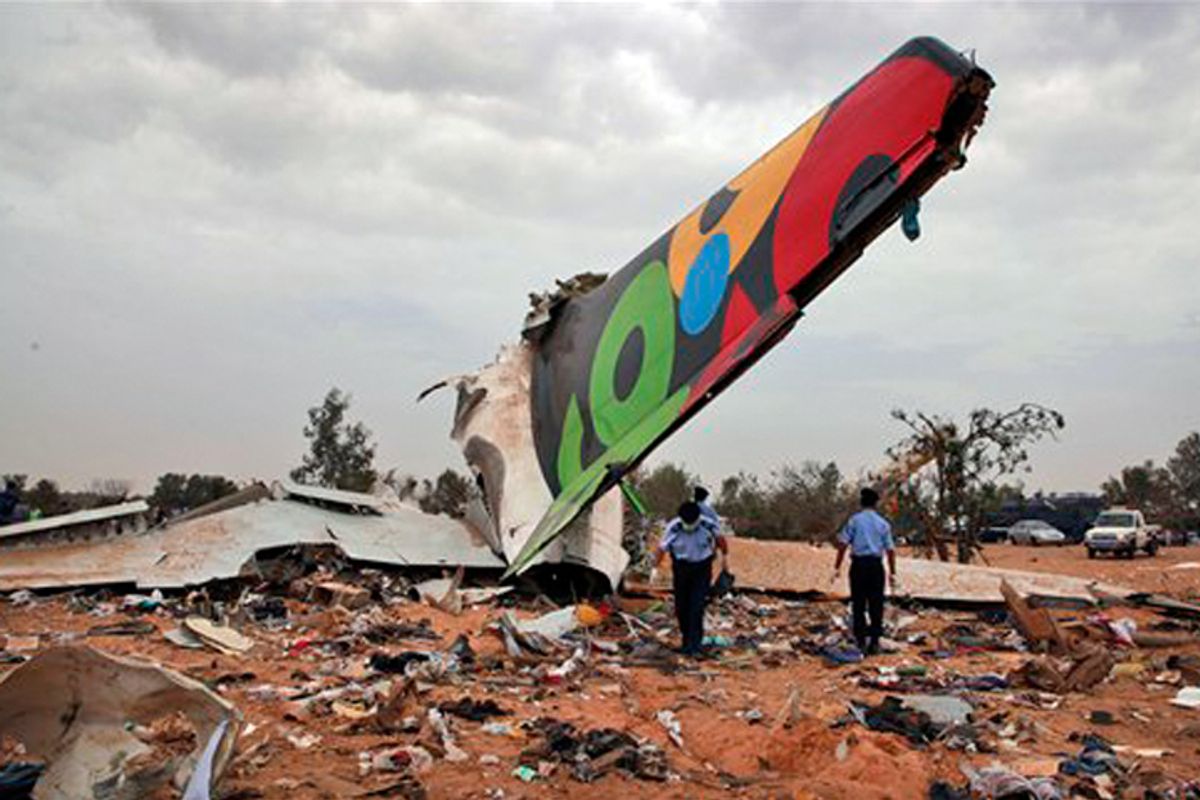You can always count on a plane crash to bring out the worst in the mainstream media.
Earlier today, an Afriqiyah Airways Airbus A330 crashed on landing at Tripoli's international airport in Libya, killing all but one of the 104 passengers and crew on board. There is strikingly little to go on at this point. Weather and visibility were good; volcanic ash was apparently not a factor, and sabotage appears unlikely. But whatever did or didn't go wrong, try not to take your cues from the TV news.
"The Airbus A330 Aircraft has been involved in several high-profile incidents," reported one New York station, "including the landing on the Hudson River in January 2009."
Wrong, that was an Airbus A320, a short-range plane less than half the size of the widebody, long-range A330. An Airbus is an Airbus, some people seem to think.
This is only the second fatal accident involving an A330. The other was the crash of Air France Flight 447 a year ago off the coast of Brazil. More than 600 A330s have been built since the type entered service in 1994.
And Fox 5's "aviation expert" said, "Everyone knows that African airlines have poor safety records ... some of the worst in the world."
Any "expert" who utters a thing like that ought to be kicked off the set with his mouth wrapped in duct tape. To dis an entire continent with such stereotypical trash is unbecoming of anybody who purports to take aviation safety seriously.
Sadly, though, rest assured we're going to be hearing such garbage over and over in the hours and days ahead.
I went over this a few weeks ago, but I have no choice but to repeat myself:
Statistically, Africa's accident record is indeed the worst in the world. However, that's painting with a very broad brush. To start with, Africa is a huge continent and it depends which region you're looking at. The biggest offenders are the western and central sub-Saharan portions of the continent, not the north. Libya, I'll point out, is right next door to Tunisia, home of the very proud Tunisair -- one of the globe's few national carriers with a perfect safety record. It has never recorded a fatality.
And what is an airline, exactly? In Africa's equatorial reaches you'll find scores of small companies operating with nowhere near the oversight or resources of airlines in the West. But you need to make the distinction between mainline, scheduled, commercial carriers, which are very safe, and lower-tier cargo and non-scheduled operators. Flying on South African Airways, Tunisair or Ethiopian Air Lines, for example, all of whom have respectable records, is not the same as flying aboard a Congolese cargo runner. Africa's "dangerous" airlines are not even airlines as most people think of them.
And I would have to place Libya's Afriqiyah Airways in with those mainline carriers. Founded in 2001 as a competitor to the longtime Libyan Arab Airlines, the company doesn't have much of a track record and is very small, with a fleet of fewer than a dozen aircraft. Just the same, it has incurred no serious penalties or violations in its relatively brief history. Crews are sent to Europe for top-notch training, and its fleet is state-of-the-art. This was its first fatal accident.
For what it's worth -- and I needn't be reminded how anecdotal and non-scientific this is -- one of my regular layover hotels overseas is also used by Afriqiyah, and I have met and chatted with Afriqiyah pilots on several occasions. We've talked about airplanes, about training, about working conditions -- about all the things pilots tend to talk about. Always the Afriqiyah crews strike me as competent and highly professional.
One survivor, a 10-year-old boy, was rescued alive from the wreckage of the Afriqiyah jet. Predictably, the media is calling this a "miracle."
In fact, most airplane accidents have survivors, some of the history's worst crashes among them. To pick just two: Sixty-one people survived the Tenerife collision in 1977, and four survived the horrific JAL crash outside Tokyo in 1985 -- history's worst and second-worst disasters, respectively.
The idea of a lone passenger making it out alive might seem a fluke, or a "miracle" if we must, but it has happened several times. When a Northwest DC-9 crashed in Detroit in 1987, the one survivor was a 4-year-old girl. The survivor of last year's Yemenia crash in the Indian Ocean was a 12-year-old girl.
What it means, if anything, that each of these sole survivors was a young child I can't be sure.
- - - - - - - - - - - -
Do you have questions for Salon's aviation expert? Contact Patrick Smith through his Web site and look for answers in a future column.

Shares